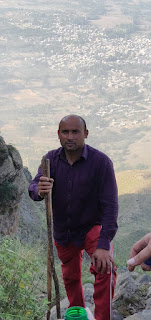Pandit Sahaz Bhat
The scholar with a healing touch
Unmesh - Monthly Newsletter of N.S. Kashmir Research Institute

Pandit Sahaz Bhat
[ That the legendary Unani hakim of Kashmir, Pandit Sahaz Bhat, was a profound scholar also, is a fact not known even to his grandson, Dr. R. N. Bhat, till NSKRI discovered it and brought out this unlikely dimension of his personality in a recent issue of 'Unmesh'. And while his miracle cures remain etched on public memory and have given to Kashmiri parlance a proverb commonly used even now, we profile here the other Sahaz Bhat with the help of inputs from his grandson, Dr. R.N. Bhat and great grandson, Dr. Ayushyaman Bhat. To the latter we are thankful for the photograph of Pandit Sahaz Bhat. ]
Born in 1862, Sahaz Kak Bhat, or Sahaz Bhat (S.B.), as he was popularly known, was the last of the six children of his parents. He must have been barely four when he lost his father and was brought up by his elder brother, Pandit Sat Kak, who held the important position of Royal Physician to the Maharaja of J & K State. For his formal schooling, S.B. was sent to the CMS School at Fateh Kadal, Srinagar where English was taught as an essential subject. S.B. was, however, not prepered to learn a language in which 'no' comes before 'yes' and soon told his elder brother that he would rather learn Persian, Arabic and of course, Sanskrit. He started taking Sanskrit and Persian lessons at home from his family guru, but discontinued these when the teacher treated him harshly.
Now on he learned by the self education method, and taught himself not only these languages but also Unani medicine that he eventually adopted as a profession to become a physician like elder brother Sat Kak. His pronunciation of both Arabic and Sanskrit was so flawless that it was difficult to make out in which of these languages he was better versed. If he became the greatest Unani hakim of his time in Kashmir, it was clearly due to his self effort.
A deeply religious person, S.B. was, however, catholic and liberal in his outlook, refusing to distinguish between man and man on the basis of caste, creed or colour. He was always immaculately dressed wearing a saffron and sandalwood paste tilak on his forehead. While treating his patients, the religiously inclined physician would not depend on his pharmacopeia alone, he would even take recourse to reciting prayers in Sanskrit or Arabic if only for a psychological effect on the patient. Nobility, generosity and philanthropy were his basic character traits that he displayed at the professional level often. He would treat the poor generally free of cost, through he would not hesitate from accepting large sums from his affluent patients as he needed money to run his charitable clinic.
"Pandit Sahaz Bhat was tall and handsome with a longish face and magnetic grace. His gait was majestic, his demeanour kingly, his disposition scholarly. By temperament he was magnanimous and benevolent and his generosity was proverbial. In conversation he was scholarly and inspiring. He had a musical voice and a handwriting that was calligraphic, so beautiful that his patients would often preserve his prescriptions in velvet bags to use them as amulets." This pen- potrait drawn by Dr. R.N. Bhat of his grandfather shows the kind of person that this physician among scholars and scholar among physicians was.
As for S.B. the scholar, it was his phenomenal knowledge of Persian, Sanskrit and Arabic that prompted the then Maharaja of J & K State to draft him into his Translation Department in 1890 as its head where he also looked after the publication of Sanskrit texts on philosophy, medicine, law etc.
With his mastery over Sanskrit, S.B. worked with Sir Aurel Stein and Pandit Govind Kaul in compiling a descriptive catalogue of 6000 Sanskrit manuscripts for Maharaja Ranbir Singh's Raghunath Temple Library at Jammu. Considered a feat in scholarship, the catalogue was printed in Bombay in 1894. S.B. painstakingly prepared extracts from each manuscript for the catalogue. Wrote Stein of S.B.'s labours: "For the most conscientious and scholarly manner in which Sahaz Bhat discharged it, I feel all the more obliged as I can well realize how irksome a great portion of the work e.g. the careful reproduction of innumerable classical errors and apashabdas of the manuscripts must have been to his Pandit instinct. His learning and thorough acquaintance with the methods of Indian scholarship especially in the shastras traditionally cultivated in Kashmir have on many occasions most usefully supplemented my printed source of references".
Another work in which S.B. collaborated with Stein and Govind Kaul was Hindi translation of the Sanskrit chronicles of Kashmir, but it could not be completed due to Govind Kaul's sudden death in 1899.
In 1935, S.B. passed away after a fullfilling life of a scholar and physicican always sought after by fame. Aurel Stein's regard for his scholarship can be summed up in the following excerpt from a nostalgic letter he wrote to Alden, one of his friends in Vienna, in 1905:
"I gathered my old entourage. It was pleasure to talk the language of gods and though my interests have now moved far northward, I shall try to keep my old friend Pandit Sahaz Bhat by me when I occupy winter quarters at Gupkar where he had been with me and Govind Kaul in the old days."
Inputs by:
Dr. R.N. Bhat
Dr. Ayushyaman Bhat
S. N. Pandita






































































































